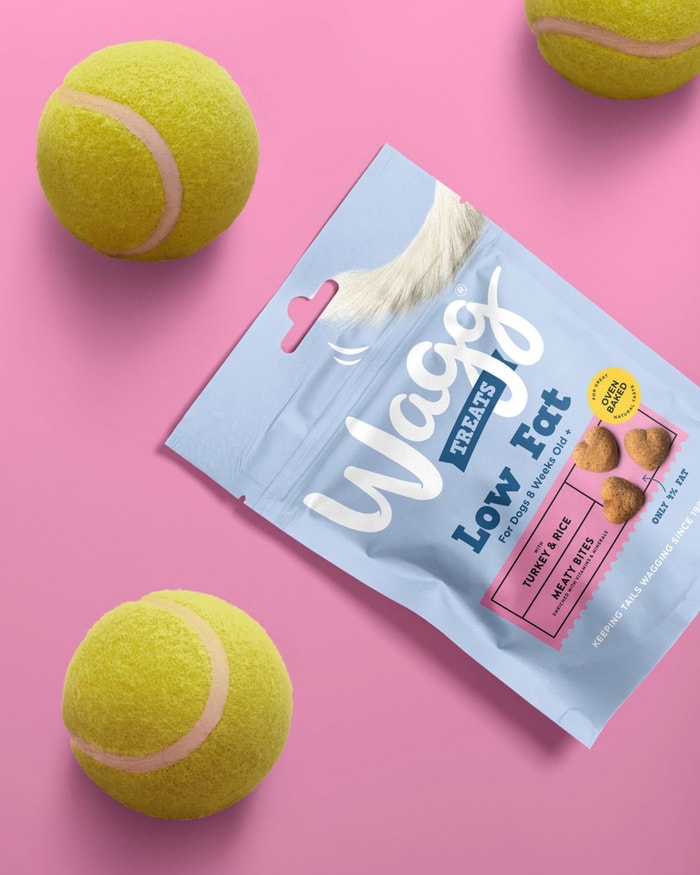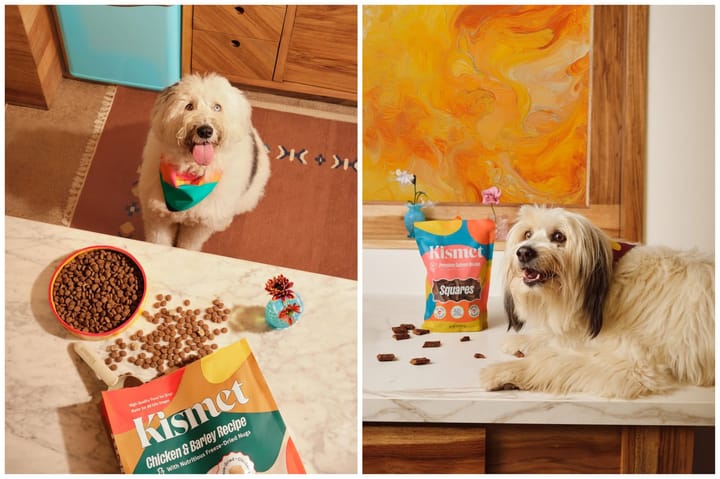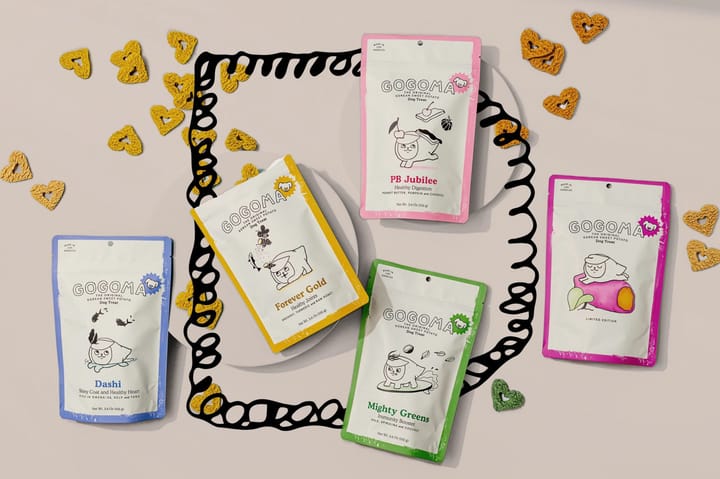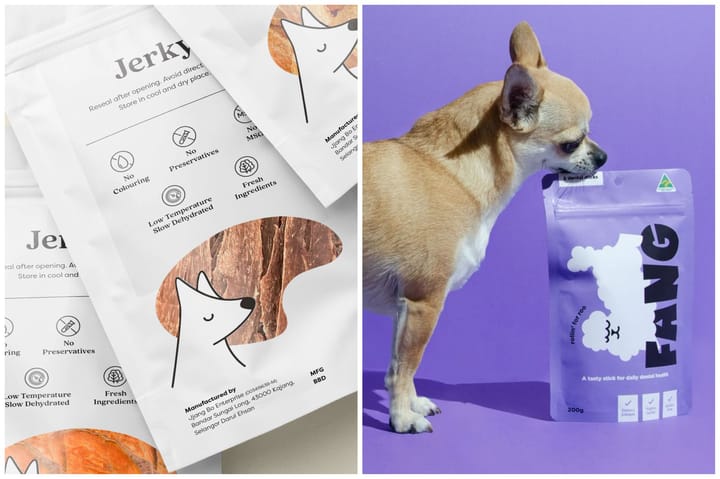
Pro Tips to Store Dog Food to Make it Last Longer
Keep your precious pet’s food nice and fresh! Get expert storage techniques to seal in nutritional integrity and prevent spoilage with good packaging.
By noissue — 24 April, 2025
If you’re a dog owner, you may rotate between feeding your furry friend a mix of wet dog food, dry dog food and treats, which all have different needs for storage.
Proper dog food storage maintains freshness and nutrition, and keeps your dog healthy and happy. If you’re unsure of what correct storage entails (get it?), noissue is here to help you understand the best ways to store your dog’s food.

Understanding dog food shelf life
Different ingredients call for varying storage methods, and some foods last longer, which impacts where you store it and how. Canned food has a significantly longer shelf life than raw food bought from the butcher shop. Each of these distinct doggy dinners has vastly different storage needs.
Check the dates on your dog food and note the differences between best-by dates, use-by dates and expiration dates. The former two are recommendations based on quality, whereas the latter is a stricter cut-off consumption date for safety purposes.
Generally, food will have post-opening rules. Some may need to be discarded after being open only a few days, even if the sealed packaging had a generous expiration date, so always read the specifics.
Discard old food that reaches its expiration date or, when opened, appears to have changed texture, has a rancid smell, or has attracted insects. Raw food that has been left out at room temperature for more than two hours should be thrown away immediately.
Essential dry dog food storage methods
Once you’ve opened a fresh pack of kibble for your pup, there’s a risk of moisture, air, and humidity creeping in to impact safety. Despite kibble having a long shelf-life of 12-18 months, this hinges on how it’s stored once opened.

Often, you’ll find that the original packaging of your dog food has barriers to retain flavor and keep any nasties out when sealed. At noissue, our Pet Food Packaging is designed with dog owners’ convenience in mind. These individual pouches come in recyclable or compostable options and don’t compromise on protection while upholding sustainability. The resealable zip offers peace of mind and ease of use.
Even in cases where the original bag does the heavy lifting, you can take extra precautions. For long-term kibble storage, pop your re-sealed dog food bag, such as noissue’s Compostable Stand-Up Pouches, inside a durable storage container with an air-tight seal. Stainless steel, glass and vacuum-sealed are all great options. Food-grade BPA-free plastic containers are another possible solution. We recommend opting for a sustainable, recyclable choice.
Fresh and wet dog food storage techniques
Naturally, fresh and wet dog food have different storage needs compared to dry food. You wouldn’t store your leftover Chinese takeout in the cupboard, would you?
For fresh food, like meat or veggies, use an air-tight container and pop it in the refrigerator for up to 5 days. Only open cans and pouches as they need to be used, following the FIFO method (first in, first out) to ensure you’re using old stock first.

Refrigerate your pet’s wet food in an air-tight glass container as soon as it’s opened. Be sure to check the label for instructions on how soon you should discard it if your pup doesn’t manage to finish it all up. Usually, wet food will last around 2-4 days in the fridge. You’ll be able to tell if the food has spoiled early by looking for discoloration or an unpleasant, sour smell.
When freezing food, transfer it out of the can and into a freezer-safe glass container or silicone moulds and thaw it in the fridge overnight before serving it up in your pet’s bowl.
Where to store dog food
For dry food, humidity levels should remain at around 15%, so always store it in a location that’s just as dry. Avoid keeping it in garages or other spaces that are at risk of water damage. We recommend the second shelf of a kitchen cupboard and away from appliances that emit heat so as not to crank up the temperature.

Wet food, if still in its can or pouch, can also be kept in a dry location, such as your kitchen cupboard. But once you open it, refrigerate it immediately. Keep it on the middle or lower shelves to avoid cross-contamination.
When freezing wet food for a long period, keep it safe inside the main compartment, instead of the door, where the temperature can fluctuate.
The best storage temperatures
The ideal temperature for dry dog food, whether sealed or opened, is 70°F. Ensuring it stays at or around this number is im-paw-tant because keeping it cool enough protects it against bacterial growth, keeping it fresh and delicious (in your dog’s opinion, that is).
Unopened moist or canned food has a lengthy shelf life if stored in a cool, dry place below 80°F. However, once opened, the high moisture content of wet food makes bacterial growth easier, so it’s crucial to handle it properly and transfer it out of the can when storing. Place opened canned food, fresh food and wet food in the refrigerator at 40°F or below to prevent bacterial growth.
Keep your dog food fresh for longer
Preventing oxidation and preserving nutrients and flavors for your dog is only achievable with the right storage. Air-tight, cool and dry spaces will keep your pet’s dry and canned food in prime condition. Keep wet dog food in air-tight containers and safely in the fridge or freezer.

Like human food, storing dog food correctly matters. Thoughtful storage keeps food tasting better, makes it last longer, and ensures your pet gets all the sustenance it needs to keep its tail wagging. Proper storage avoids potential problems like spoilage, food waste and even health risks.
Whether you’re a pet food business owner looking for customizable food bags or a dog shelter manager looking for affordable, reliable solutions, browse noissue’s pouches today. We can provide both custom-branded and plain packaging options to suit your pet packaging needs!